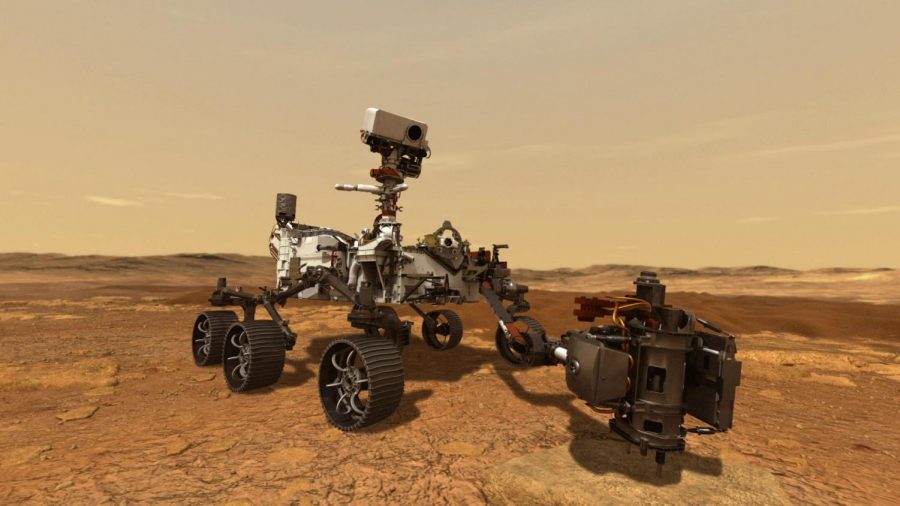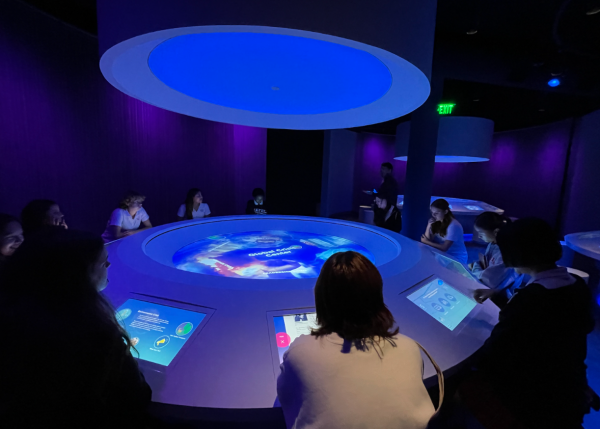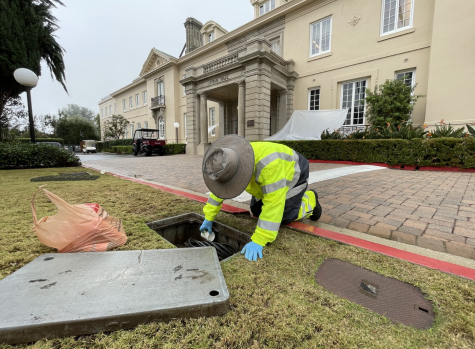2020 Mars Rover Launch
The Mars Rover, Perseverance.
Cocoa Beach, Fl — While Covid-19 changed the summer plans of many people here on Earth, the scientists behind the launch of the next Mars rover, Perseverance, remained hard at work to ensure the launch to our closest planet was not delayed.
The official launch window for Perseverance was from July 17th to August 15th and the rover, in fact, took off within the allotted time frame. “For the rover to get from earth to mars, the planets had to be in the correct location,” JPL scientist, Dr. Luther Beegle explained, “which happens every twenty sixth months.” Since Mars has a different number of days in the year, the planetary alignment of earth and mars was key to the launch timing, in order for the rover to arrive.
This means that if the engineers on the mission had not been able to launch, they would have had to postpone the launch for another two years.
The likelihood that it would be postponed was low, but two months before the actual blast off, a problem causing a leak in the oxygen tank in one of the fuel tanks of the rocket was discovered. It was fixed shortly after discovery, but two weeks of the launch window were lost while projecteers repaired the fuel tank. Thankfully, the launch was not further delayed and on July 30th at 07:50am EDT, the rocket with the rover on board successfully took off.
Onlookers from Cocoa Beach, Florida, began the morning with a calm view over the ocean. The spacecraft launch rose above trees in the distance. The rocket became visible as a small strip of white with flames coming out of the bottom. The craft left smoke behind as it traveled, which looked like clouds in a narrow arch moving much faster than the flight of a plane. However, what was even more fascinating about the launch was the time delay from the sight to the sound. Although oohs and ahhs were not said out loud, many observers looked as if they thought it, and a few clapped at the sight. It took about 20 seconds for the sound to reach where the spectators assembled, and though miles away from the official launch sight, the crowd could still feel the effects of the delayed rumble of the engines vibrating through the landscape. Click here to see a video of the launch.
Not long after the official launch, down in Florida, scientists on the project discovered a slight miscommunications error with the rover. It had appeared that the cruise stage had automatically switched into a safe mode. This meant that the rover detected a threat and shut down to await further instructions. It was later revealed that the reason behind this error had to do with the temperature gauge. The rover had gone a few degrees below the expected temperature range. After the analysis of the data it was realized that this was not a problem. And everything is now fully functional.
Scientists are relieved by the successful launch of the rocket, and now will wait roughly six and a half months until the landing in Jezero Crater on Mars on February 18, 2021.The crater is an ancient lake and the landing will take place in front of an ancient river delta. If life did exist on mars, then there is a better possibility of finding it in this location.
“Landing is a difficult process, in that it is all automated because of the time delay from Mars to here. The entire landing takes seven minutes,” said Dr. Beegle.
“JPL engineers that work on entry descent and landing call it the seven minutes of terror,” said Beegle, this best describes the stress the scientists feel during landings. Here’s hoping that the landing goes off without a hitch.
Video of Launch https://www.youtube.com/watch?v=VWD-nx9gA0o
Curiosity 7 minutes of terror https://www.youtube.com/watch?v=h2I8AoB1xgU

Abigail Beegle is currently a sophomore at Mayfield senior school. She has been on the newspaper staff in 2019-2020 and 2020-2021 school years. Abby is...













Jessica M • Sep 21, 2020 at 7:28 pm
Well written and insightful story! Thank you for sharing the experience. I got a good sense of what it would have been like to have been there in person. Beautiful photo of the reporter too.